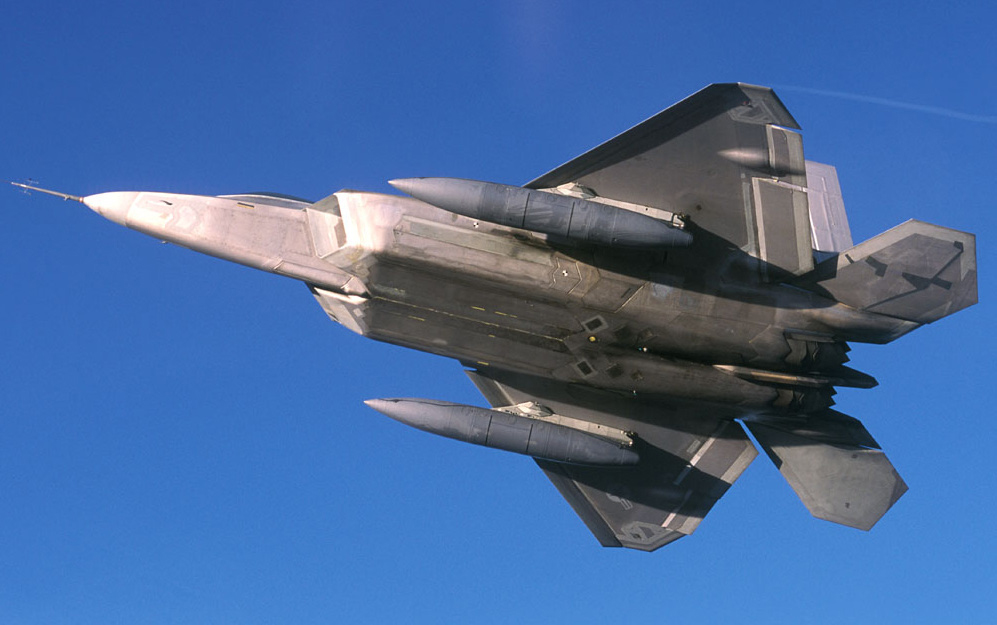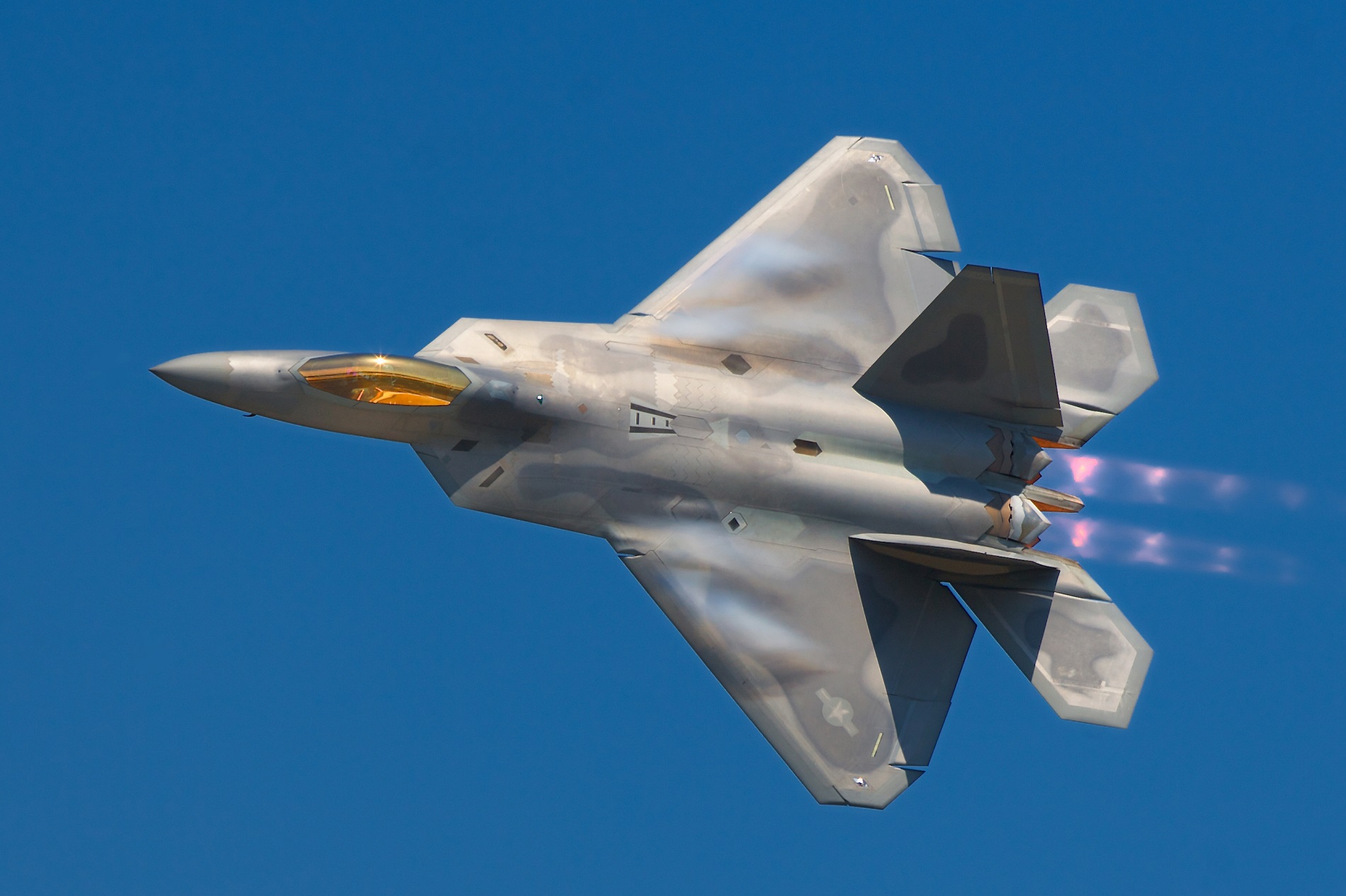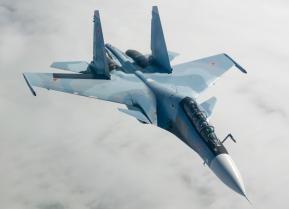F-22 Raptor: Meet What Might Be the Best Fighter Plane on Earth
Developed as an air superiority fighter in the late 1980s as part of the United States Air Force's Advanced Tactical Fighter (ATF) program, the F-22 won out over a competing design from Northrop and McDonnell Douglas – the YF-23.
In July 2023, the United States Air Force deployed several Lockheed Martin F-22 Raptors to the Middle East as a show of strength amid escalating tensions between the U.S. and Russian forces.
Sending one of the most advanced fighters was meant to bolster U.S. firepower further if needed – as no one would want to mess with one.
Moreover, despite being the world's greatest air superiority fighter, the Raptor, in its nearly 20 years in service, has never been employed in aerial combat.
That isn't a bad thing, however, and we should hope it stays that way. If the Raptor has to bear its claws and head into an actual fight, it could mean the U.S. is suddenly in a very real and potentially dangerous conflict.
F-22 Raptor: Combat Incapable?
The F-22 missed out on a potential air-to-air combat opportunity in June 2017, when F-15 Strike Eagles and F/A-18 Super Hornets engaged adversarial aircraft over Syria – but the Raptor did make its combat debut in a ground attack role against targets in Syria in September 2014.
During Operation Inherent Resolve, the American-led intervention in Syria, Raptors dropped 1,000-pound GPS-guided bombs on Islamic State targets near the Tishrin Dam. From September 2014 to July 2015, the F-22 conducted 204 sorties over Syria, dropping 270 bombs at some 60 locations.
F-22 Raptors also operated alongside U.S. Air Force B-52 Stratofortress bombers, which targeted opium production and storage facilities in Taliban-controlled regions of Afghanistan in November 2017. Yet, the Raptor still didn't get to bloody its claws.
To date, the Raptor's first and only aerial kill occurred on February 4 of this year, when an F-22 from the 1st Fighter Wing downed the alleged Chinese Spy balloon that had crossed the United States. It could be described as overkill as the aircraft fired a single AIM-9X Sidewinder missile at the balloon within visual range off the coast of South Carolina.
In many ways, it could also explain why despite the aircraft's advanced capabilities, the Air Force opted to cut the program shot.
The History of the F-22
Developed as an air superiority fighter in the late 1980s as part of the United States Air Force's Advanced Tactical Fighter (ATF) program, the F-22 won out over a competing design from Northrop and McDonnell Douglas – the YF-23.
The single-seat, twin-engine, all-weather stealth tactical fighter took its first flight 26 years ago on September 7, 1997, following six years of development. The Collier Award-winning aircraft was designed to combine stealth, supercruise, agility, and situational awareness, coupled with improved supportability.

While primarily an air superiority fighter, the Raptor could also serve as a ground-to-air attack aircraft.
It was even briefly designated the F/A-22, only to be officially redesignated the F-22 in December 2005, when the aircraft achieved its initial operational capability with the U.S. Air Force's 27th Fighter Squadron.
As the first "fifth-generation" aircraft, the Lockheed Martin warbird was also developed with a "first look, first shot" advantage that included its AN/AGP-77 active electronically scanned array (AESA) radar that could track targets before going electronically silent. In addition, each F-22 pilot could receive information from other F-22s, allowing for a radar-silent attack.
In addition to ground attack, the multirole aircraft was designed to conduct electronic warfare and even signal intelligence capabilities.

So Why Was it Cut Short?
As it was developed during the Cold War when the West feared a war with the Soviet Union, the Air Force had originally sought to acquire a total of 750 F-22 Raptors. With the dissolution of the Soviet Union, questions began to be raised about whether such aircraft were needed – especially as the F-22 was far from a "cheap" warbird.
It took decades and almost $70 billion to develop.
The program was cut short to just 187 operation production aircraft due to the high cost, and the last F-22s were delivered in 2012, and now there have been reports that the future of those aircraft could be in question.
Several factors have come into play, including its high costs, and a lack of air-to-air missions due to the U.S. military's involvement in the Global War on Terror (GWoT) as well as a general focus on counterinsurgency operations. Additionally, the Pentagon's ban on exports to protect its advanced technologies and the development of the F-35 Joint Strike Fighter simply meant an end to the program.
More recently, U.S. Air Force officials have noted the fifth-generation stealth aircraft simply lacks the magazine depth as well as the range required to meet the role of the service's air superiority fighter in the next decade.

Service officials have called to retire some of the oldest of the Raptors.
They said that by retiring the 32 F-22 Raptors from Block 20 – arguing that those aircraft can’t actually be used in combat – the Air Force could save roughly $485 million a year or $2.5 billion over the next five years.
That money could be directed to fund the Next Generation Air Dominance (NGAD) program, which has been described as a system of systems that will include a six-generation fighter and autonomous support aircraft.
Perhaps the Air Force will find it better suited to the challenges of the 21st Century.
Author Experience and Expertise
Peter Suciu is a Michigan-based writer. He has contributed to more than four dozen magazines, newspapers, and websites with over 3,200 published pieces over a twenty-year career in journalism. He regularly writes about military hardware, firearms history, cybersecurity, politics, and international affairs. Peter is also a Contributing Writer for Forbes and Clearance Jobs. You can follow him on Twitter: @PeterSuciu.
Image Credit: Creative Commons for All Images.


